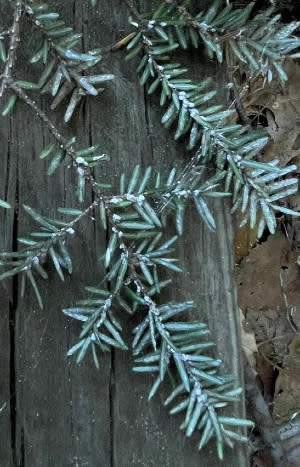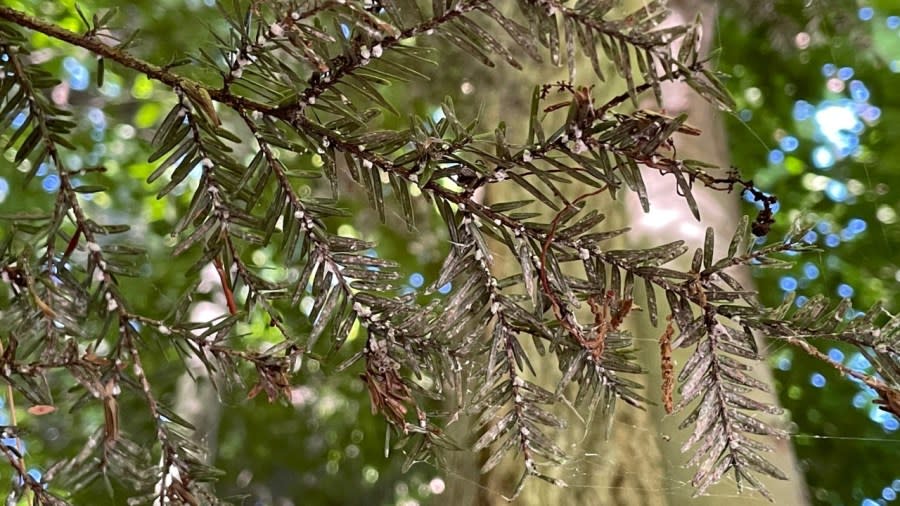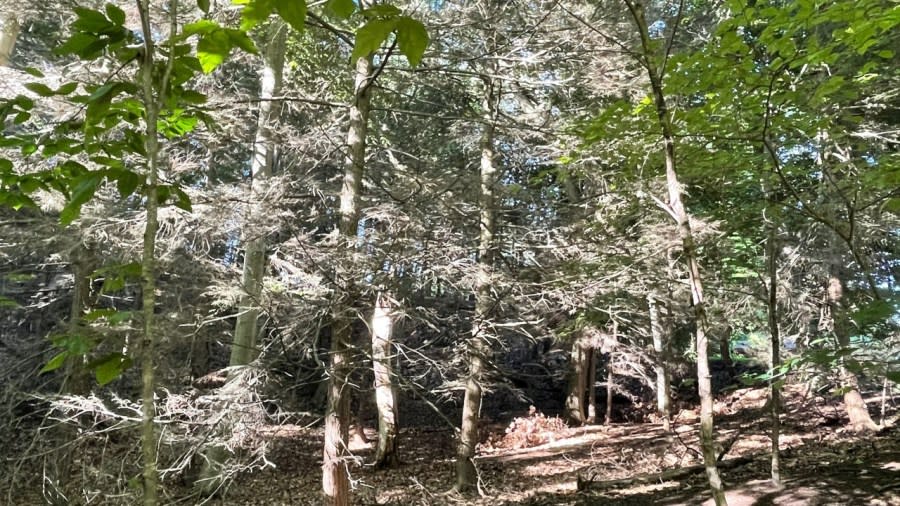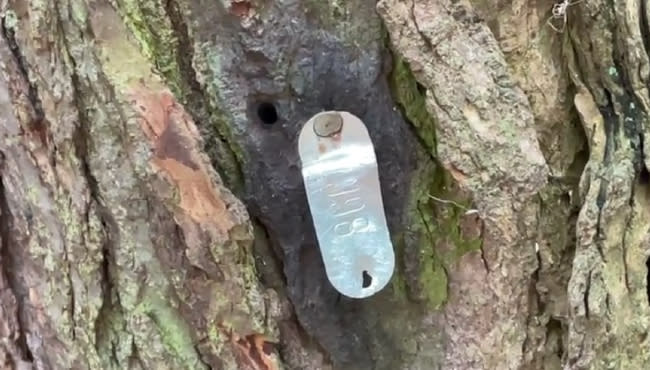Invasive hemlock woolly adelgid found in eighth Michigan county
GRAND RAPIDS, Mich. (WOOD) — State agencies have confirmed an invasive insect has been found in an eighth Michigan county.
The Michigan Department of Agriculture and Rural Development announced Monday that they have verified the presence of the hemlock woolly adelgid near Torch Lake in western Antrim County.
“The extent of the infestation has not yet been determined, but an extensive survey of the surrounding area is underway,” the agency said in a statement. “With this new detection, Antrim becomes the eighth county in the state with an active hemlock woolly adelgid infestation, joining Allegan, Benzie, Mason, Muskegon, Oceana, Ottawa and Washtenaw counties.”
The infestation was found by a landowner who had previously attended an educational outreach event held by the Charlevoix, Antrim, Kalkaska, Emmet County Cooperative Invasive Species Management Area.
Infestations of invasive bug confirmed in Huron-Manistee National Forests
Adelgids are often spotted by the white, waxy ovisacs they excrete on the trees in the fall and winter where they feed. Those tiny white ovisacs are between one-fourth and one-sixteenth of an inch and can be found on the underside at the base of the hemlock’s needles.
DNR expert Drew Hayner said the bugs primarily spread by hitching rides on of humans and other animals.
When hemlock woolly adelgid feed, the leave behind a small, white cottony ball called an ovisac that forms at the base of the needles. (Matt Jaworowski/WOOD TV8) A close-up look at an Eastern Hemlock tree in Lake Harbor Park fighting an infestation of hemlock woolly adelgid. (Matt Jaworowski/WOOD TV8) Several dying hemlock trees in Lake Harbor Park spotted on July 25, 2022. DNR expert Drew Rayner says the hemlock woolly adelgid is the likely cause. (Matt Jaworowski/WOOD TV8) This photo shows a tag on a hemlock tree in Duncan Woods along with a hole that was drilled to administer a treatment to kill of the hemlock woolly adelgid. (Matt Jaworowski/WOOD TV8)
“There’s a lot of vectors,” Rayner told News 8 in 2022. “Animals can spread them; birds and wildlife can pick up crawlers. We have crawlers from spring through the early summer that we aren’t really going to be able to see (when) humans and animals brush up against the branches of an infested tree.”
Because hemlock woolly adelgids are pulling nutrients from the trees, the hemlocks stop growing and their needles develop a grayish tone. But with treatment — assuming they are caught in time — the insects are killed and the trees can recuperate.
State approves $3.6 million to ward off hemlock woolly adelgid, other invasive species
According to the DNR, Michigan is home to more than 170 million mature hemlock trees, which provide important habitat and coverage for wildlife during the winter.
If you spot a tree that you believe is infested with hemlock woolly adelgid, do not remove the material. The DNR asks you to take photos and note the location of the tree, then submit the information to the agency. You can learn more about the invasive species through the DNR’s website.
For the latest news, weather, sports, and streaming video, head to WOODTV.com.




